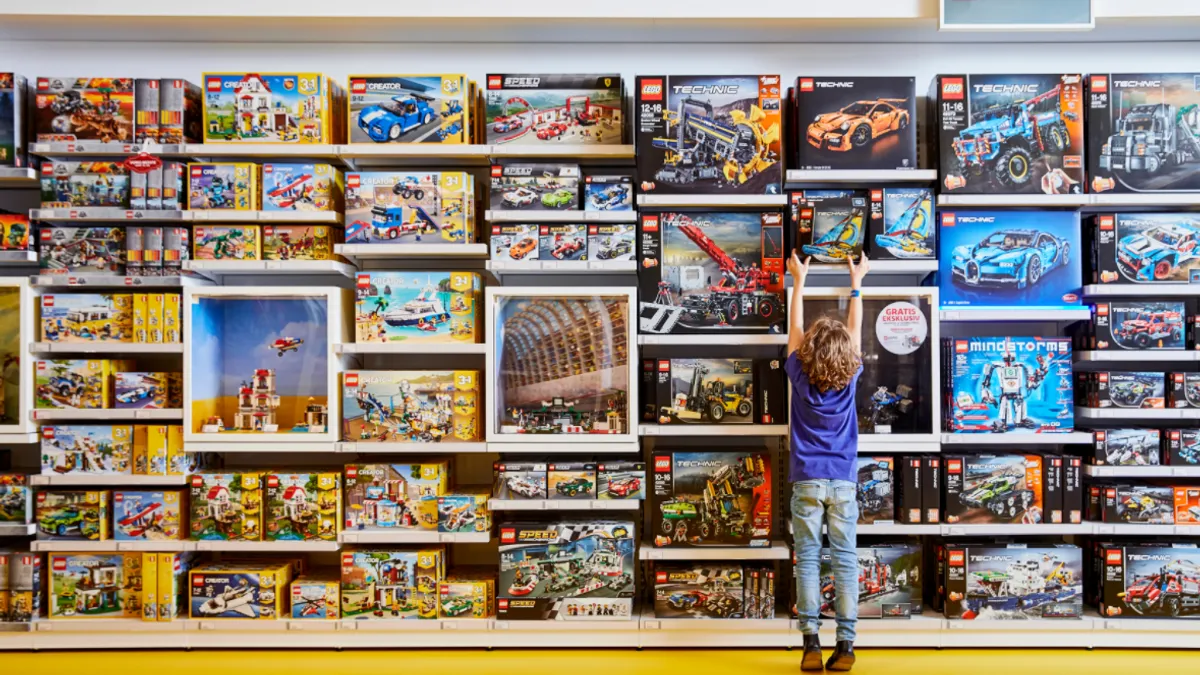Dive Brief:
- U.S. toy sales between January and April rose 6% year over year, and the number of units sold also saw a 3% bump compared to the same period last year, according to a Circana report released Tuesday.
- During Q1, toy sales for shoppers age 18 and older jumped 12% compared to the previous year. Adult shoppers spent $1.8 billion on toys during the quarter, making them the largest spending cohort across age groups, according to Circana’s analysis of checkout data.
- Higher-priced toys ($20 to $69.99) and toys priced under $15 grew in sales compared to last year, while mid-tier priced toys were pinched, Circana said in its report.
Dive Insight:
Among all the industries that Circana tracks, in early 2025 the toy category has been the fastest growing segment. It’s a trend driven in part by collectible sports trading cards and Pokémon.
Sales growth among higher-tier toys and lower-tier toys signals that consumers are either “trading up or pulling back,” Juli Lennett, vice president and toy industry adviser at Circana, wrote in the report.
“The good news is consumers are signaling that they will spend on the things they need and those that make them happy,” Lennett said in a statement. “For the toy industry, this can range from buying toys for themselves or as special occasion gifts for loved ones. What toy they opt for, how many they are purchasing, and where they are shopping, however, are all factors that might look different moving through 2025.”
Adult consumers have been a recent driving force behind toy sales. According to a Circana report released last year, U.S. toy sales stabilized in the first half of 2024 after inflation, depleted savings and consumer credit card debt drove a downturn in the category in 2023. In another report last year, Circana found that adults accounted for more toy sales than preschoolers, with nearly half (43%) purchasing a toy for themselves in the previous year for reasons including socialization, collecting and enjoyment.
While toy sales have rebounded, tariffs have placed pressure on the category. As President Donald Trump concentrates tariffs on Chinese goods, the toy industry is uniquely threatened because nearly 80% of toys imported into the U.S. come from China. Toys generally have low price points, with over two-thirds of products costing less than $25, which has previously protected the category during economic downturns, UBS analyst Arpine Kocharyan noted. However, the introduction of tariffs may push many companies to pass the cost off to consumers.
“The toy industry is showing its resiliency during a turbulent time, but will need to nimbly adapt to a retail landscape of polarized consumers and ongoing inflation concerns,” Lennett said.













